
The Communist Party of Nepal (Unified Marxist–Leninist) (Nepali: नेपाल कम्युनिष्ट पार्टी (एकीकृत मार्क्सवादी-लेनिनवादी), romanized: nēpāla kamyuniṣṭa pārṭī (ēkīkr̥ta mārksavādī-lēninavādī); abbr. CPN (UML)) is a communist political party in Nepal. The party emerged as one of the major parties in Nepal after the end of the Panchayat era.
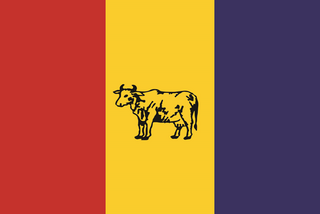
The Rastriya Prajatantra Party is a constitutional monarchist and Hindu nationalist political party in Nepal.

There are three types of elections in Nepal: elections to the Federal Parliament, elections to the provincial assemblies and elections to the local government. Within each of these categories there may be by-elections as well as general elections. Currently three electoral systems are used: parallel voting for House of Representatives and provincial assemblies, Single transferable vote for National Assembly and first past the post for local elections.

The National Assembly or Rastriya Sabha is the upper house of the Federal Parliament of Nepal, the lower house being the House of Representatives. The composition and powers of the Assembly are established by Part 8 and 9 of the Constitution of Nepal. There are a total of 59 members: 8 members are elected from each of the seven provinces by an electoral college of each province, and three are appointed by the President on recommendation of the government.

The Nepal Communist Party, abbreviated NCP is a defunct communist party which existed in Nepal from 2018 to 2021. It was founded on 17 May 2018, from the unification of two leftist parties, Communist Party of Nepal and Communist Party of Nepal. The unification was completed by the Party Unification Coordination Committee, after eight months of negotiation. The two predecessor parties subsequently dissolved, making way for the new united party. The party retained the electoral symbol of the CPN (UML), the sun.

The president of Nepal is the head of state of Nepal and the commander-in-chief of the Nepalese Armed Forces.
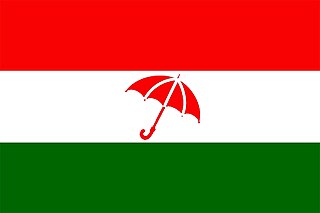
The Rastriya Janata Party, Nepal, abbr. RJPN was the fourth-largest political party in Nepal after the Nepali Congress, the Nepal Communist Party and the Samajbadi Party, Nepal. It was formed on 21 April 2017 after the merger of Tarai Madhes Loktantrik Party, led by the Mahantha Thakur, Terai Madhes Sadbhawana Party, led by the Mahendra Raya Yadav, Sadbhavana Party, led by the Rajendra Mahato, Nepal Sadbhawana Party, led by the Anil Kumar Jha, Madhesi Jana Adhikar Forum (Republican), led by Rajkishor Yadav and Rastriya Madhesh Samajwadi Party, led by Sharat Singh Bhandari. The party was founded with the ideology of democratic system.

Local government in Nepal is the third level of government division in Nepal, which is administered by the provincial governments which in turn is beneath the federal government. Article 56 of the Constitution of Nepal 2015 defines local government as rural municipalities, municipalities and district assemblies.

General elections were held in Nepal in two phases on 26 November and 7 December 2017 to elect the 275 members of the fifth House of Representatives, the lower house of the Federal Parliament of Nepal.
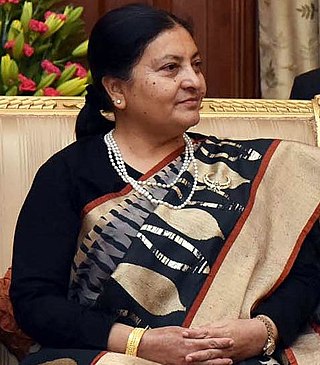
The third presidential election of Nepal was held on 13 March 2018. As a new election law was developed and as, due to the Nepalese election in 2017, an electoral college could be established, the election took place three years after the previous presidential elections despite the presidential term of office actually being set at 5 years. The President was elected by an electoral college composed of the members of federal parliament and provincial assemblies. The total number of voters was thus 880, however the 331 members of Federal Parliament have a vote weight of 79, while the 549 members of Provincial Assemblies have a vote weight of 48. In total 862 lawmakers participated in the election leading to a turnout of 97.95%.

The Provincial Assembly of Gandaki Province also known as the Gandaki Province Sabha, is a unicameral governing and law making body of Gandaki Province, one of the seven provinces in Nepal. The assembly is seated at the provincial capital Pokhara in Kaski District at the Urban Development Training Centre. The assembly has 60 members of whom 36 are elected through first-past-the-post voting and 24 of whom are elected through proportional representation. The term of the assembly is five years until dissolved earlier.
2018 National Assembly elections were held in Nepal on 7 February 2018 across all seven provinces to form the first National Assembly since the adoption of the new constitution in 2015. According to Article 86 of the Constitution of Nepal 2015, the members of the National Assembly are elected every six years through an electoral college. In addition to this, one-third of the members are retired every two years for six years by drawing a lottery.

The First Federal Parliament of Nepal, consisting of the House of Representatives and the National Assembly, was elected via the 2017 legislative, provincial and local elections.
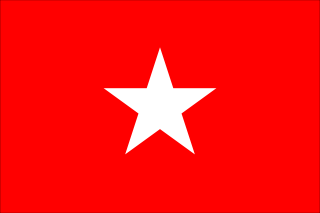
The People's Socialist Party, Nepal, also known as Janata Samajbadi Party is the sixth-largest political party in Nepal. Since the 2022 local election, the party has been limited to stand only as the third largest party of Madhesh Province after the Nepali Congress and CPN (UML) respectively. Recently the party emerged as a member party in Socialist Front.
National Assembly elections were held in Nepal on 26 January 2022 in order to elect 19 of the 20 retiring Class II members of the National Assembly, the upper house of the Federal Parliament of Nepal. Members of the National Assembly are elected through indirect ballot and serve six year terms with one third of the members retiring every two years. However, the retiring members served only four year terms due to the entire house being elected in 2018 when a lottery was held to determine two, four and six year term members.
The fourth presidential election of Nepal, to elect the country's third president since the abolition of the monarchy, was held on 9 March 2023.
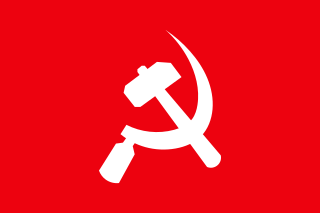
At the end of 2020, a major split in the Nepal Communist Party (NCP) revived the Communist Party of Nepal and the Communist Party of Nepal.

The Municipal election for Rajbiraj were held in 13 May 2022 to elect a mayor, a deputy mayor, 16 ward chairperson and ward members. All positions are for a period of 5 years. A secondary election is to be held for the municipal executives which will elect 5 women from the elected ward members and 3 members who must be from the Dalit and minority community. The electorate for this election will be the 82 members chosen by direct election. Janata Samajwadi Party mayoral candidate Bhimraj Yadav was elected as a Mayor of Rajbiraj by securing 9,624 votes.
The first Bagmati Provincial Assembly was elected by the 2017 provincial elections in Nepal. 110 members were elected to the assembly, 66 of whom were elected through direct elections and 44 of whom were elected through the party list proportional representation system. The term of the assembly started on 1 February 2018 and ended in September 2022. Dormani Poudel and Astalaxmi Shakya served as the chief ministers from the CPN (UML) and Rajendra Prasad Pandey served as chief minister from CPN during the term of the assembly. Sanu Kumar Shrestha served as the speaker of the assembly and Radhika Tamang served as the deputy speaker.
National Assembly elections are scheduled to be held in Nepal on 25 January 2024 in order to elect 19 of the 20 retiring Class III members of the National Assembly, the upper house of the Federal Parliament of Nepal. Members of the National Assembly are elected through indirect ballot and serve six year terms with one third of the members retiring every two years.


























